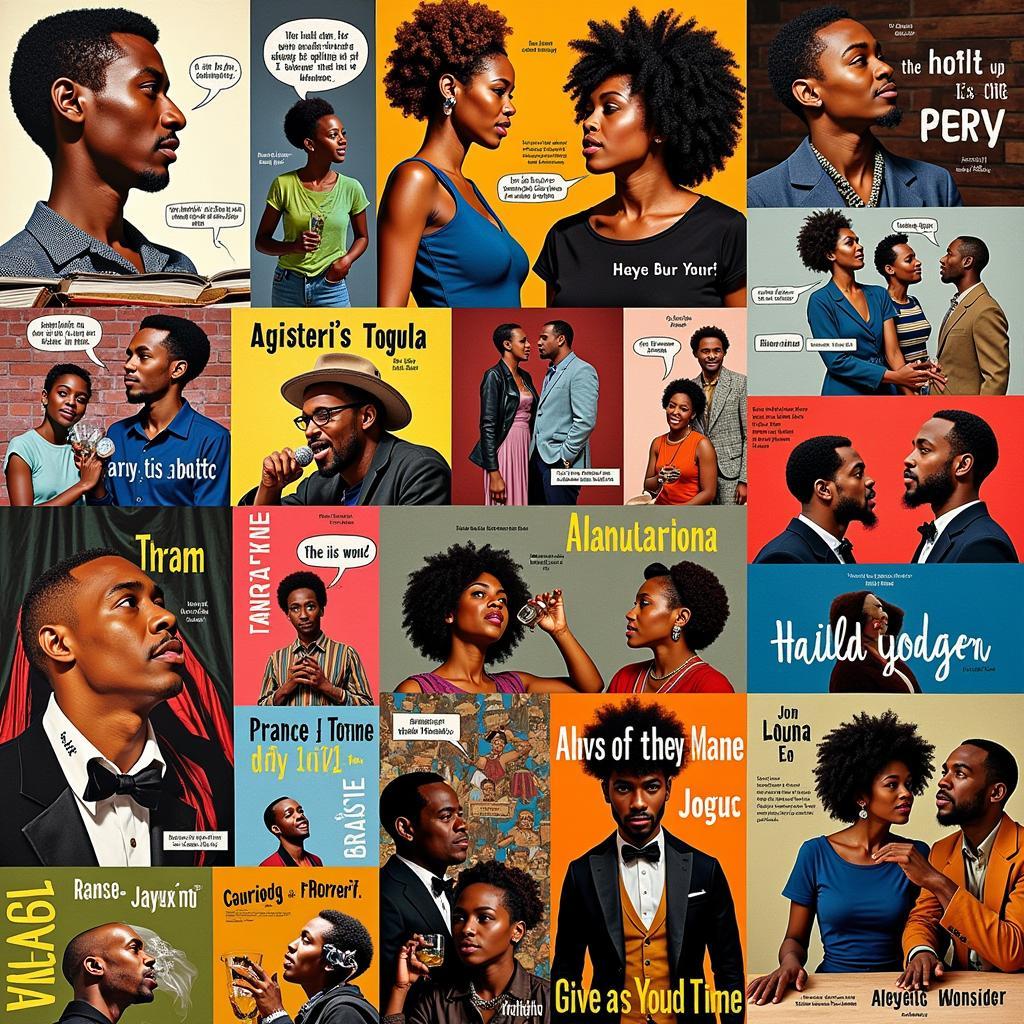Exploring the Diverse World of African Attire Styles
African Attire Styles are a vibrant tapestry of cultural expression, reflecting the continent’s rich history, traditions, and artistic sensibilities. From the intricate patterns of Kente cloth to the flowing elegance of kaftans, African clothing tells a story of heritage, creativity, and identity. This exploration delves into the diverse world of African attire, showcasing the unique styles that define different regions and cultures across the continent. You will discover the meaning behind these garments and the evolving trends shaping contemporary African fashion.
A Continent of Colors and Fabrics: Understanding African Attire
African attire is far more than just clothing; it is a powerful symbol of cultural heritage and individual expression. Each region, country, and even tribe boasts unique styles, fabrics, and embellishments that reflect their specific customs and beliefs. These styles often incorporate vibrant colors, intricate patterns, and symbolic motifs, telling stories of ancestry, social status, and spiritual beliefs. Understanding the significance of African attire provides a deeper appreciation for the continent’s diverse cultures and the artistry behind each garment. For a deeper understanding of the cultural significance, you can explore more on African attire meaning.
Traditional African clothing varies greatly depending on the climate, lifestyle, and cultural practices of different regions. In North Africa, loose-fitting garments like djellabas and kaftans are common, offering protection from the sun and desert heat. West Africa is known for its vibrant, handwoven textiles, such as Kente cloth and Aso Oke, often used in elaborate ceremonies and celebrations. You can find some beautiful examples of African kaftans online. In East Africa, kanga and kitenge fabrics, featuring bold prints and Swahili proverbs, are widely worn. Southern Africa showcases a mix of traditional and modern influences, with beaded jewelry and intricately patterned garments playing a significant role in cultural expression.
Modern Interpretations of Traditional African Attire Styles
While traditional styles remain deeply cherished, contemporary African fashion is experiencing a dynamic evolution. Designers across the continent are blending traditional elements with modern aesthetics, creating innovative and globally recognized styles. This fusion of old and new is breathing fresh life into African attire, attracting international attention and showcasing the continent’s creative potential. The fashion scene is embracing sustainable practices and incorporating locally sourced materials, further enhancing the cultural and economic value of African attire. For example, African knitwear for men showcases the diverse and creative uses of traditional and modern techniques.
Many African designers are now gaining international recognition for their innovative creations, which often incorporate traditional patterns, fabrics, and techniques into contemporary silhouettes. This modern take on African attire allows individuals to express their cultural heritage while embracing current fashion trends. From high-fashion runways to everyday wear, African prints and styles are making a significant impact on the global fashion landscape.
What are the Different Types of African Attire?
African attire encompasses an incredibly vast array of styles, each with its own unique history and cultural significance. From the elaborate headdresses of the Maasai to the brightly colored boubous of West Africa, the diversity of African attire is a testament to the continent’s rich cultural heritage. These garments often serve practical purposes, such as protection from the elements, while also reflecting social status, religious beliefs, and artistic expression.
Understanding the diverse types of African attire offers a glimpse into the complex tapestry of cultures that make up the continent. Whether it’s the flowing robes of North Africa or the intricate beadwork of Southern Africa, each style tells a unique story. The influence of African attire can be seen across the globe, inspiring designers and fashion enthusiasts alike.
How has African Attire Evolved Over Time?
African attire has constantly evolved, influenced by historical events, cultural exchanges, and the creative ingenuity of its people. From ancient traditions to contemporary trends, African clothing reflects a dynamic interplay between heritage and innovation. Globalization has played a significant role in shaping modern African attire, introducing new fabrics, techniques, and design influences.
Throughout history, African attire has adapted to changing social norms and economic conditions. The introduction of new materials and technologies has also contributed to the evolution of traditional styles. Today, African fashion designers are at the forefront of innovation, creating stunning garments that celebrate the continent’s rich heritage while embracing modern trends. For an interesting comparison, take a look at African American fashion in the 1970s.
Conclusion
African attire styles are a vibrant expression of the continent’s rich cultural heritage and creative spirit. From traditional garments steeped in history to modern interpretations pushing the boundaries of fashion, African attire continues to captivate and inspire. Exploring the diverse world of African clothing offers a fascinating journey into the heart of a continent brimming with artistic innovation and cultural pride.
FAQ
- What is the most popular African attire? This depends on the region, but Ankara styles are widely recognized and celebrated.
- Where can I buy authentic African attire? Many online retailers and local markets offer authentic African clothing and accessories.
- How can I incorporate African attire into my everyday wardrobe? Start with accessories like scarves or jewelry, then gradually incorporate garments like skirts or shirts with African prints.
- What is the significance of colors in African attire? Colors often hold symbolic meaning, representing different aspects of life, spirituality, and cultural identity.
- Are there specific occasions where African attire is traditionally worn? Yes, various ceremonies, festivals, and celebrations often feature specific types of African attire.
- What are some popular African fabrics? Kente, Ankara, Aso Oke, and Kanga are among the most popular and recognizable African fabrics.
- How can I care for my African attire? Follow the care instructions for specific fabrics, but generally hand washing or delicate machine cycles are recommended.
Need assistance with African Attire? Contact us:
Phone: +255768904061
Email: kaka.mag@gmail.com
Address: Mbarali DC Mawindi, Kangaga, Tanzania.
We offer 24/7 customer support.

